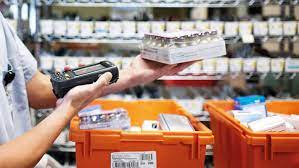Patent Medicines- Leading pharmaceutical Distributor
At the point when a pharmaceutical distributor initially fosters another medication to be utilized for a sickness condition, it is at first sold under a brand name by which the clinicians can endorse the patent medicine for use by patients. The medication is covered under patent medicine, which implies that lone the drug distributor that holds the patent is permitted to produce, market the medication and at last make benefit from it.
Much of the time, the medication patent is granted for around twenty years in the United States. The lifetime of the patent medicine differs among nations and furthermore between drugs. Since the organization applies for a patent well before the clinical preliminary to evaluate a medication's security and adequacy has started, the powerful patent period after the medication has at long last gotten endorsement is frequently around seven to twelve years.
When the patent has terminated, the medication can be fabricated and sold by different organizations. Now, the medication is alluded to as a nonexclusive patent medication. As indicated by rules in many nations, including those from the US FDA, nonexclusive medications must be indistinguishable from the marked medication as far as adequacy, wellbeing, utilization, course of medication organization, pharmacokinetics and pharmacodynamics.
Consequently, a medication can be produced as a conventional medication when the accompanying apply:
The organization that would fabricate the nonexclusive patent medicine guarantees that the licenses hung on the medication are either unenforceable, are invalid or would not be encroached upon
When the conventional medication is available, the syndication of the patent medicine holder is taken out. This supports rivalry and results in a huge drop in drug costs, which guarantees that life-saving and significant medications arrive at everybody at relative costs.
The organization holding the underlying patent may, nonetheless, reestablish the patent by framing another form of the medication that is altogether changed contrasted with the first compound. Notwithstanding, this might require new clinical preliminaries and re-use of the patent. Moreover, the new compound might need to rival the first nonexclusive particle available, except if the medication controllers discover blames and eliminate the first from the market by and large.
Licenses are a property right allowed by the United States Patent and Trademark Office whenever during the improvement of a medication and can incorporate a wide scope of cases. Eliteness was intended to advance a harmony between new medication development and more prominent community to drugs that outcome from nonexclusive medication rivalry.
Conventional producers, and the recently creating biosimilars market, are then given a chance to make a similar medication once the restrictiveness period lapses and the medication is off-patent. When contest enters the market, the cost of medication diminishes fundamentally and patients advantage with expanded admittance to more moderate, FDA-supported medications. Experience shows physician endorsed drug costs decrease by in excess of 60% following a year of generics entering the market.




Comments
Post a Comment